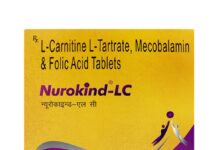Considering the increase in critical illness cases in India and the high medical cost associated with them, experts seem to believe there is a high need to avail of critical illness coverage with term insurance from a life insurance company. Once diagnosed with any critical illness covered under the critical illness rider, the insurance company will be liable to pay a lump sum amount. If you are unsure how a critical illness rider functions, then this article will answer all your queries.
How Does a Critical Illness Policy Work?
Assume your relative has been diagnosed with a serious illness. The doctor has recommended a combination of 6 chemotherapy, surgery, and maybe radiation therapy as well. So, the treatment period is unclear in this case.
To allow the patient to focus on their treatment, the insurer usually pays out the money insured in one lump sum or in installments to the policyholder. In the latter case, the insurer pays a certain proportion of the insured amount as a lump sum (usually 25%), with the rest amounts paid in EMIs over a set period of time.
If your relative has critical illness coverage worth ₹20 lakhs, the insurer will pay the sum insured amount based on the chosen payout model. However, the policyholder can only file a claim after completing a waiting term and an initial surviving period after being diagnosed with a serious illness. The policyholder may use the insurance payment to cover treatment costs as they arise.
Should you add Critical Illness as a rider or buy it as a standalone?
Life insurance companies provide critical illness cover as an add-on to the base life insurance plans only. On the other hand, general insurance companies don’t provide you with a critical illness rider. They only offer health insurance cover only.
Purchasing critical illness coverage as a rider has several limits. A critical illness rider’s coverage and premium should not exceed the coverage amount and premium you are paying for the base policy. On the other hand, its term is also limited by the tenure of the base policy.
This is the reason why it is preferred to purchase a standalone critical illness policy from a health or general insurance company, as it is not restricted in this way. These plans offer additional flexibility in terms of coverage level and policy duration.
What to know before you buy a Critical Illness Cover?
Get apt coverage: It is critical to choose an appropriate level of coverage. While there is no rule of thumb, it can be linked to a policyholder’s annual income. A coverage amount of four to five years’ yearly income appears to be adequate and can provide financial stability to you and your family for a few years in case of your job loss due to being diagnosed with a critical illness.
Read the ailments carefully: Common critical illness products on the market cover 15 to 20 ailments and are thus not exhaustive. These plans provide coverage for major diseases like cancer and kidney failure. However, several insurers have recently created critical illness packages that cover 64 or even 99 ailments. These policies are obviously more extensive and include coverage for catastrophic illnesses. However, such programmes can be pricey.
Sanctioned amount is based on the severity of the illness: All critical illness insurance feature layered benefits, in which the insurer pays the claim amount based on the severity of the ailment. A specific ailment may qualify a policyholder for only 25% or 50% of the basic cover amount. A more severe form of the same ailment may pay 100% of the insured amount. This will be determined only by the illness’s diagnosis, which will include the severity. Thus, it is always recommended to read your policy documents carefully.
Read the policy document carefully: Because of the complex nature of the plan and the exhaustive list of conditions covered under critical illness policy, certain sales materials may lack all of the information and a description of what is covered. However, the policy document offers a complete list of coverages and exclusions in full. So, read carefully before buying an insurance policy.
How Do I Opt for the Best Critical Illness Insurance Cover?
Check the following points if you want to buy the best critical illness insurance plan:
Evaluate the coverage terms: You can never completely predict the illness you will be diagnosed with in the future. As a result, it is wise to get coverage that covers the most critical ailments.
Evaluate the inclusions and exclusions: Every insurance policy specifies which conditions, treatments, and prices the insurer will cover or exclude. It is, therefore, critical to assess the inclusion and exclusion under your chosen plan.
Review the Survival Period: To file a critical illness insurance claim, you must first survive an initial period before receiving the claim amount. It therefore makes sense to select a policy with a significantly shorter survival duration.
Verify the exit age: Most critical illness plans include an exit age (typically 50 years) after which your coverage ends. As a result, it is better to select a policy with a high exit age or one that offers lifelong renewal benefits.
So we are saying, Thanks to the awareness campaign that insurance companies seem to run, Term and health insurance have recently become very popular. However, the critical illness option is still unpopular among the masses because one believes that their health insurance plan is sufficient to cover the ailments. However, after COVID, one has become more precautious than ever to protect themselves and their family from uncertainties and critical illness cover can further take the coverage.
Also Read: Cheap steroids can save critically ill Covid patients: WHO analysis







